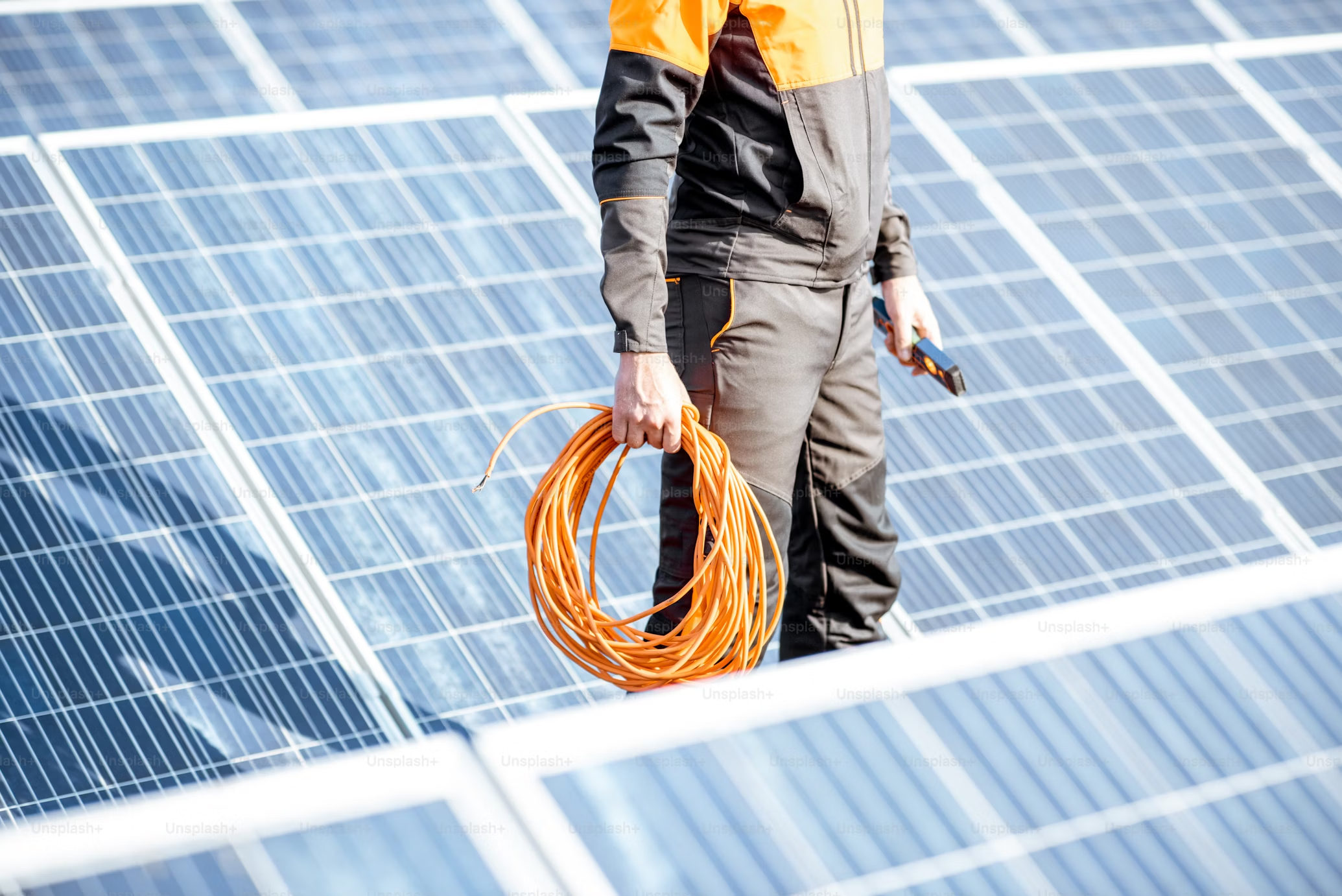The Ultimate Checklist: What to Consider Before Buying Solar for Your Rooftop


The Ultimate Checklist: What to Consider Before Buying Solar for Your Rooftop
As solar energy gains momentum, more homeowners are looking to harness the power of the sun to reduce electricity bills and embrace sustainable living. However, installing solar panels isn’t just about picking the most popular option—it requires careful planning, research, and informed decision-making. A well-thought-out solar investment can maximize your energy savings and ensure long-term efficiency. To help you navigate the process, here’s a comprehensive checklist to ensure you make the right investment for your home.
1. Assess Your Roof’s Suitability
Before diving into solar, it’s crucial to evaluate whether your roof can support a solar energy system. Here are key factors to consider:
· Roof Condition: If your roof is old or needs repairs, it’s best to fix it before installing solar panels. Panels typically last 25–30 years, so your roof should be in good shape to match this lifespan.
· Roof Space & Size: The amount of available space determines how many panels you can install. Consider any obstructions such as skylights, vents, or chimneys.
· Roof Orientation & Angle: In the Northern Hemisphere, south-facing roofs receive the most sunlight. However, east- and west-facing roofs can also be viable, depending on their exposure.
· Shading Issues: Trees, neighbouring buildings, and other structures can cast shadows on your panels, reducing energy generation. Conduct a shading analysis to ensure optimal sunlight exposure.
2. Understand Your Energy Needs
A solar system should align with your household’s energy consumption. Understanding your needs will help determine the appropriate system size.
· Current Electricity Consumption: Review past electricity bills to calculate your average monthly and yearly usage.
· Future Energy Needs: Consider potential lifestyle changes, such as adding an electric vehicle, installing more appliances, or expanding your home.
· System Size Calculation: Work with a professional to determine the right capacity. A system that’s too small won’t cover your needs, while an oversized one may not be cost- effective.
3. Choose the Right Solar Panels & Equipment
Not all solar panels and components are created equal. Selecting high-quality equipment ensures longevity and better efficiency.
· Panel Efficiency & Warranty: High-efficiency panels generate more power in limited space. Look for warranties of 10–25 years for durability assurance. Different types of solar panel (and the terminology used by solar installers) you should be aware of are:
(a) Bifacial Solar Panels: These panels have solar cells on both the front and rear sides, allowing them to capture sunlight from both directions.
(b) Monocrystalline Panels: Solar panels are made from a single crystal of silicon. They are preferred for their high efficiency.
(c) Polycrystalline: Solar panels are made from a multiple crystal of silicon. They are preferred over monocrystalline due to their cost-effectiveness.
(d) Thin-film: Solar panels are made from a thin layer of semiconductor material, are flexible and lightweight.
Above types of solar panels can be categorized further into following types:
(i) DCR (Domestic Content Requirement) Solar Panels: Solar cells and modules are manufactured domestically. Only installations with DCR solar panels qualify for government subsidy.
(ii) Non-DCR Solar Panels: Solar cells and modules are imported. They may be more cost effective but do not entitle the solar users for government subsidies under Surya Ghar yojna.
· Inverter Type: Inverters convert solar energy into usable electricity. Options include:
· String Inverters: Cost-effective but less efficient in partially shaded areas.
· Microinverters: More efficient, as each panel operates independently.
· Power Optimizers: Enhance efficiency while keeping costs lower than microinverters.
· Battery Storage (Optional): If you experience frequent power outages or want to store excess energy for night-time use, consider adding a battery backup.
· Safety devices: do ensure that solar installers’ quote include adequate safety devices for following:
(i) Overcurrent and short circuits in DC and AC circuits
(ii)Voltage spikes due to lightning or grid fluctuations
(iii) High rated cables against fire incidents
(iv) Earthing & Lightning protection
(v) Protection from overvoltage and overcurrent
· Quality Certifications: Ensure the panels meet industry standards such as BIS (Bureau of Indian Standards) in India, or IEC and UL certifications globally.
4. Evaluate the Cost & Financing Options
Solar power is a long-term investment. Understanding costs and financing options will help make an informed decision.
· Upfront Cost vs. Long-term Savings: While solar panels require an initial investment, they can significantly lower your electricity bills over time.
· Government Incentives & Subsidies: Many governments offer tax credits, rebates, and net metering policies that allow you to sell excess power back to the grid.
· Financing Options:
a) Outright Purchase: Higher upfront cost but maximises savings over time.
b) Solar Loans: Spread the cost over time with manageable monthly payments.
c) Leasing & Power Purchase Agreements (PPAs): Lower upfront costs, but you may not own the system.
5. Select a Reliable Solar Provider
A trusted solar provider ensures smooth installation and long-term support. Consider the following when choosing a company:
· Reputation & Reviews: Research online reviews, testimonials, and case studies to gauge customer satisfaction.
· Installation Experience: Work with certified installers who have proven experience with solar systems.
· After-sales Service & Maintenance: Ensure your provider offers warranties, maintenance plans, and prompt technical support.
6. Check Local Regulations & Permits
Solar installation involves local laws and grid requirements. Make sure you comply with all necessary regulations.
· Building Permits & Approvals: Some municipalities and housing societies require prior approvals before installation.
· Grid Connectivity & Net Metering: Understand how to connect to the grid and if you can receive credits for exporting excess energy.
· HOA/Community Guidelines: If you live in a gated community, check for any restrictions on solar panel installations.
7. Think About Maintenance & Performance Monitoring
Once installed, your solar system will require periodic maintenance to function efficiently.
· Cleaning Requirements: Dirt, bird droppings, and dust can reduce panel efficiency. Clean them periodically or hire a professional cleaning service.
· Monitoring System: Many modern setups include mobile apps that allow real-time tracking of energy production and usage.
· Annual Maintenance Checks: Schedule professional inspections to identify any issues and ensure maximum efficiency.
Final Thoughts
Investing in solar is a long-term commitment that offers significant savings and environmental benefits. By following this checklist, you can make a well-informed decision that maximises your returns and ensures a seamless transition to clean energy.
Switching to solar doesn’t have to be complicated. At CUSP Solar, we simplify the process by connecting you with trusted and verified solar providers. Save time on research and avoid the hassle of vetting multiple companies—our marketplace ensures you get reliable solutions tailored to your needs.
Explore your options today and start powering your home with the sun!
Stay tuned for our next blog, where we’ll dive deeper into how to choose the right solar provider for your home.


No Comment! Be the first one.